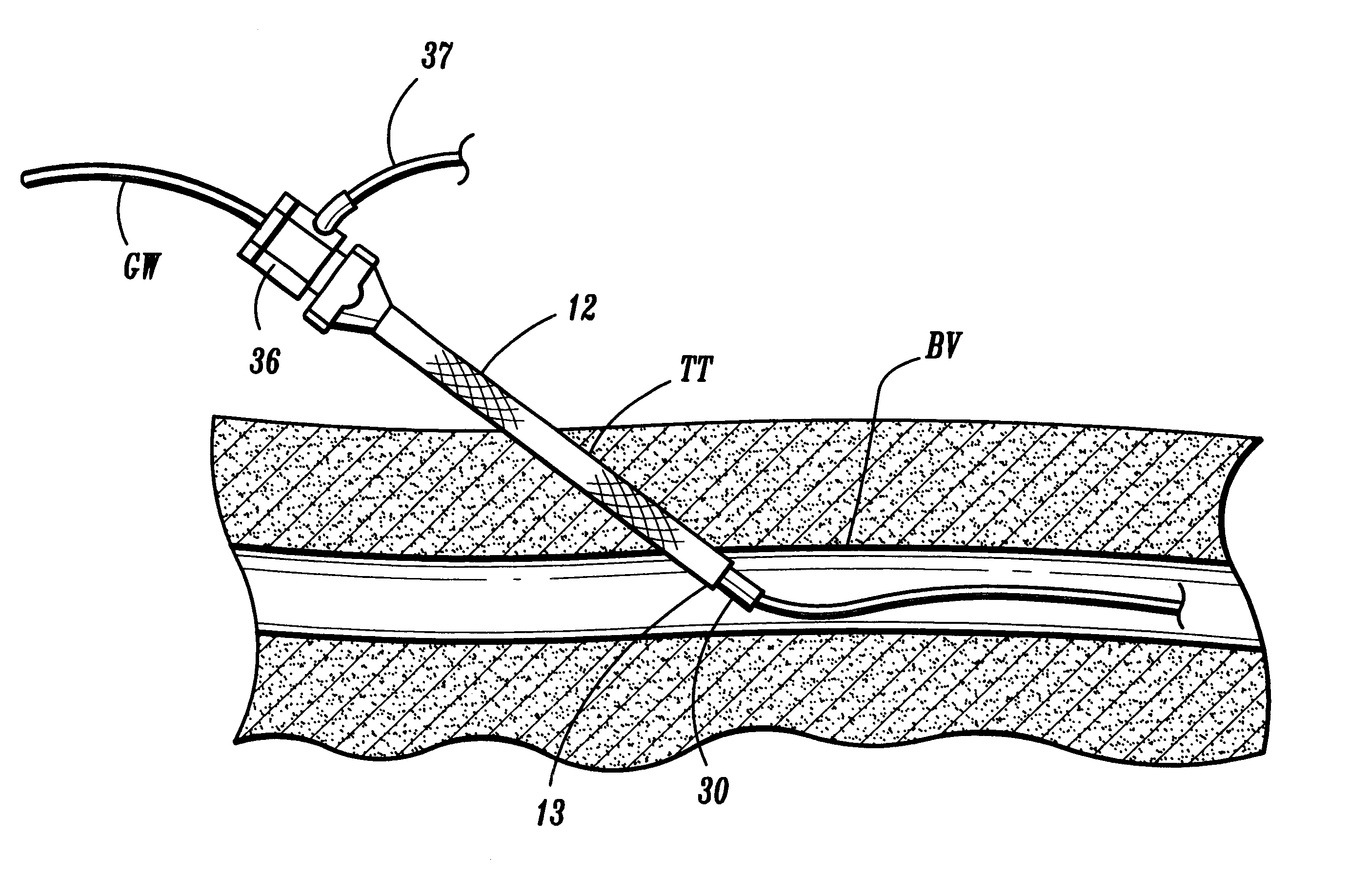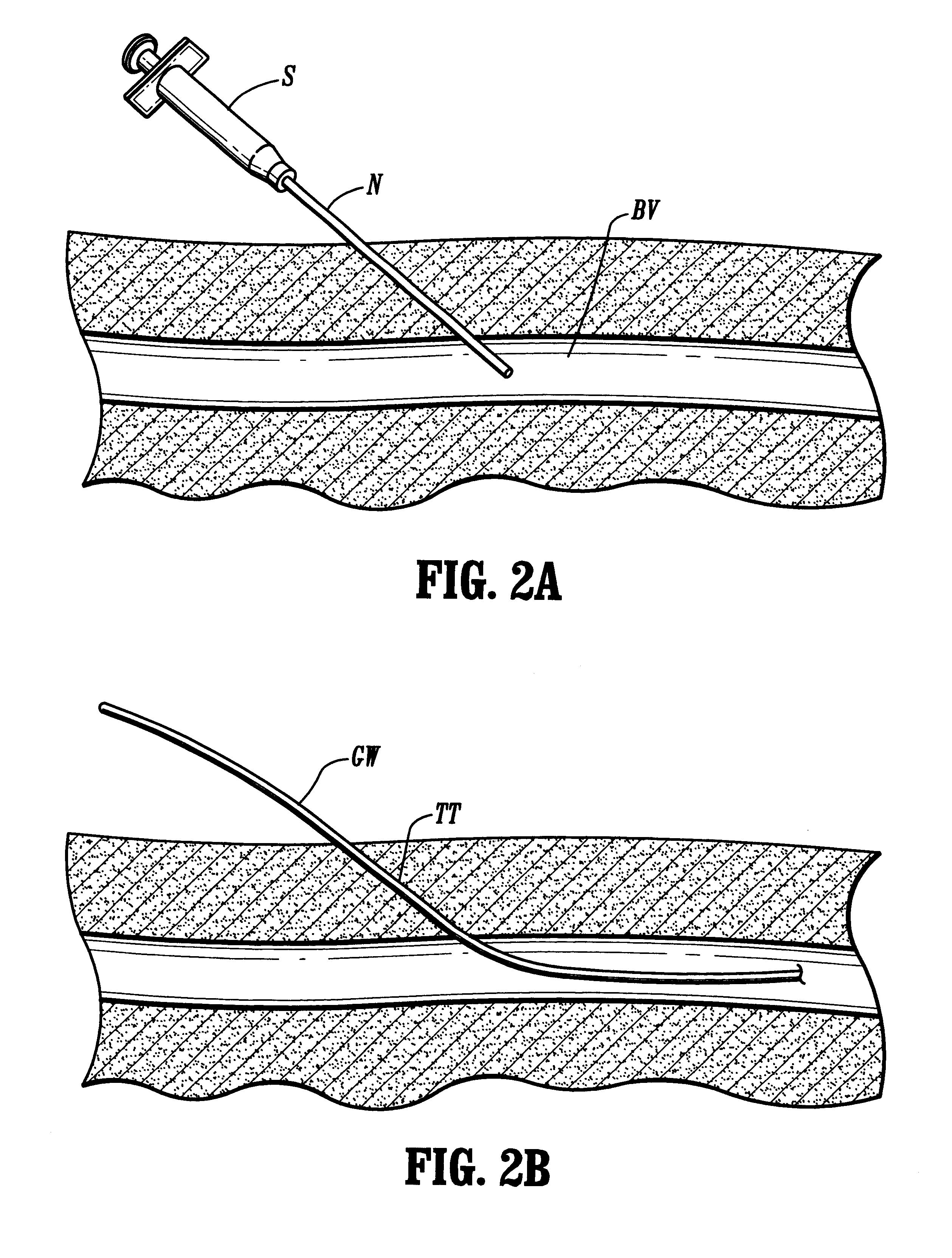System and method for establishing vascular access
a vascular access and percutaneous technology, applied in the field of medical devices and medical methods, can solve the problems of delaminate or otherwise damage the tissue surrounding the tissue tract, the diameter of the tissue tract is expanded by the radially expandable sleeve is very small, and the access technique of conventional seldinger and other directions can be difficul
- Summary
- Abstract
- Description
- Claims
- Application Information
AI Technical Summary
Benefits of technology
Problems solved by technology
Method used
Image
Examples
Embodiment Construction
Referring to FIG. 1, a system 10 for establishing vascular access according to the principles of the present invention comprises a radially expandable sleeve 12, a dilator 14, and a guidewire 16. The radially expandable sleeve comprises a radially expandable tubular body having a proximal end, a distal end, and an axial lumen extending from the proximal end to the distal end. Usually, a handle 20 is provided at the proximal end of the body so that the sleeve can be manually held during use, e.g., tension can be applied on the handle as the dilator 14 is passed through the body of the sleeve as described in more detail below. The radially expandable sleeve 12 may have a compliant or elastic structure which permits expansion from an initial small diameter (radially collapsed) configuration to a larger diameter configuration which is caused by introduction of the dilator therethrough. Use of the compliant or elastic sleeve will require a separate component for maintaining the expanded ...
PUM
 Login to View More
Login to View More Abstract
Description
Claims
Application Information
 Login to View More
Login to View More - R&D
- Intellectual Property
- Life Sciences
- Materials
- Tech Scout
- Unparalleled Data Quality
- Higher Quality Content
- 60% Fewer Hallucinations
Browse by: Latest US Patents, China's latest patents, Technical Efficacy Thesaurus, Application Domain, Technology Topic, Popular Technical Reports.
© 2025 PatSnap. All rights reserved.Legal|Privacy policy|Modern Slavery Act Transparency Statement|Sitemap|About US| Contact US: help@patsnap.com



